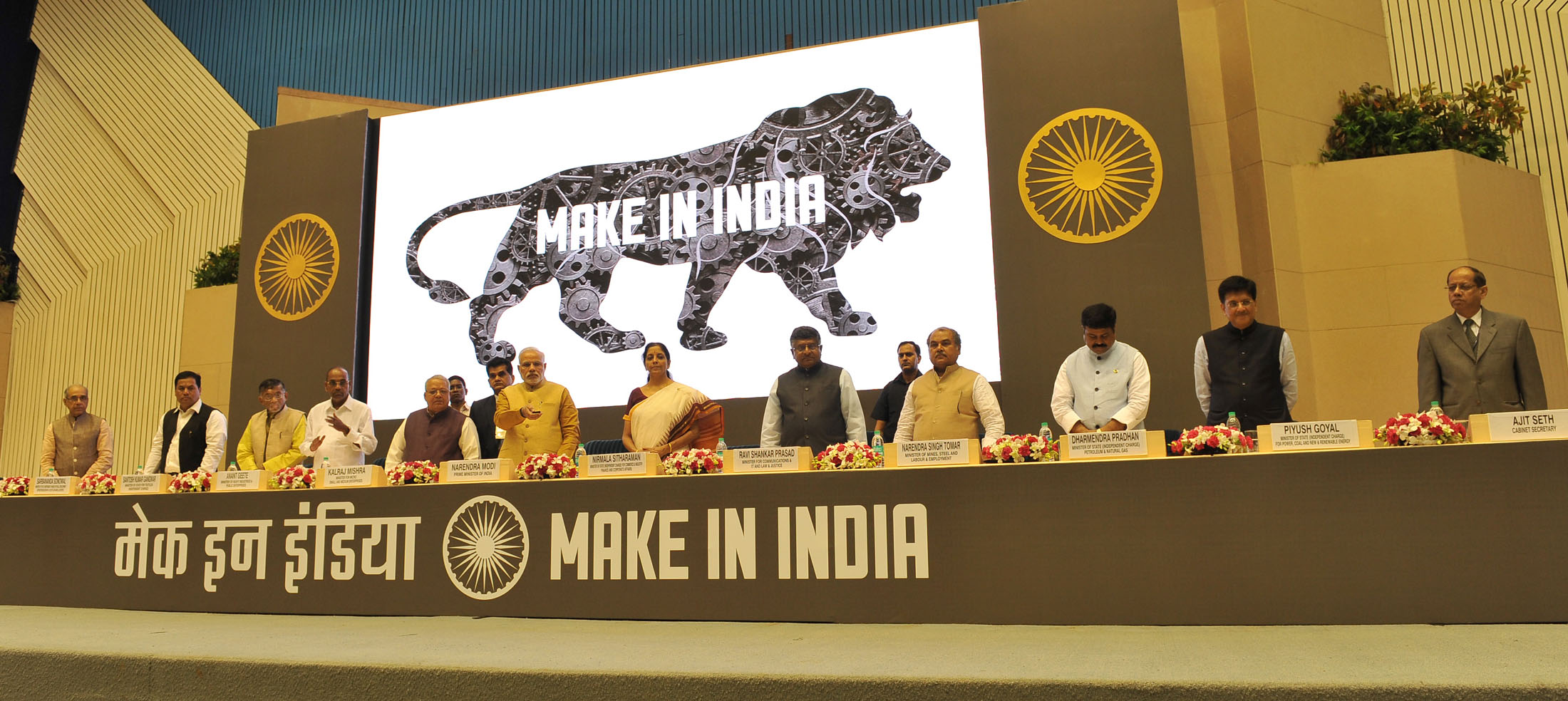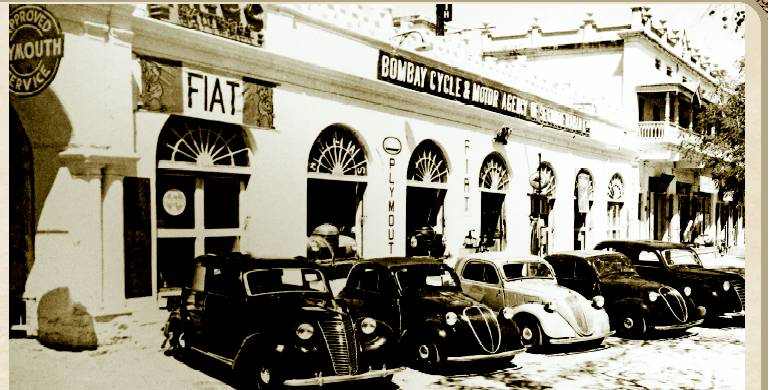|
Production Linked Incentive (PLI) Schemes In India
Production Linked Incentive, or PLI, scheme of the Government of India is a form of performance-linked incentive to give companies incentives on incremental sales from products manufactured in domestic units. It is aimed at boosting the manufacturing sector and to reduce imports. Objective of these schemes entail Make in India, incentivising foreign manufacturers to start production in India and incentivise domestic manufacturers to expand their production and exports.Explained: What is PLI scheme, and which sectors will be under it? Indian Express, 8 Nov 2020. The GoI has introduced Rs 1.97 lakh cr (US$ 28 b) PLI schemes for 13 sectors. For example one of these sectors is the |
Government Of India
The Government of India (ISO: ; often abbreviated as GoI), known as the Union Government or Central Government but often simply as the Centre, is the national government of the Republic of India, a federal democracy located in South Asia, consisting of 28 union states and eight union territories. Under the Constitution, there are three primary branches of government: the legislative, the executive and the judiciary, whose powers are vested in a bicameral Parliament, President, aided by the Council of Ministers, and the Supreme Court respectively. Through judicial evolution, the Parliament has lost its sovereignty as its amendments to the Constitution are subject to judicial intervention. Judicial appointments in India are unique in that the executive or legislature have negligible say. Etymology and history The Government of India Act 1833, passed by the British parliament, is the first such act of law with the epithet "Government of India". Basic structure The gover ... [...More Info...] [...Related Items...] OR: [Wikipedia] [Google] [Baidu] |
Performance-linked Incentives
A performance-linked incentive (PLI) is a form of incentive from one entity to another, such as from the government to industries or from an employer to an employee, which is directly related to the performance or output of the recipient and which may be specified in a government scheme or a contract. PLI may either be ''open-ended'' which does not have a fixed ceiling for the quantum of incentive granted or ''close-ended'' which has an upper ceiling as stipulated in the scheme or the contract. Open-ended incentives are normally applicable to revenue-generating activities (e.g., sales, production, efficiency, competitiveness, etc), while close-ended incentives are associated with quality improvement or support functions (e.g., operations, human resources, administration, etc.) Method of calculating PLI Also, in calculating PLI, only the performance and not the potential of the recipient is considered. Potential of the recipient is normally subjective and can be contested. PLI is ba ... [...More Info...] [...Related Items...] OR: [Wikipedia] [Google] [Baidu] |
Economy Of India
The economy of India has transitioned from a mixed planned economy to a mixed middle-income developing social market economy with notable state participation in strategic sectors. * * * * It is the world's fifth-largest economy by nominal GDP and the third-largest by purchasing power parity (PPP). According to the International Monetary Fund (IMF), on a per capita income basis, India ranked 142nd by GDP (nominal) and 125th by GDP (PPP). From independence in 1947 until 1991, successive governments followed Soviet style planned economy and promoted protectionist economic policies, with extensive state intervention and economic regulation. This is characterised as dirigism, in the form of the License Raj. The end of the Cold War and an acute balance of payments crisis in 1991 led to the adoption of a broad economic liberalisation in India. Since the start of the 21st century, annual average GDP growth has been 6% to 7%, and from 2013 to 2018, India was the world's f ... [...More Info...] [...Related Items...] OR: [Wikipedia] [Google] [Baidu] |
Economic Nationalism
Economic nationalism, also called economic patriotism and economic populism, is an ideology that favors state interventionism over other market mechanisms, with policies such as domestic control of the economy, labor, and capital formation, including if this requires the imposition of tariffs and other restrictions on the movement of labor, goods and capital. The core belief of economic nationalism is that the economy should serve nationalist goals. Economic nationalists oppose globalization or at least question the benefits of unrestricted free trade. They favor protectionism and advocate for self-sufficiency. To economic nationalists, markets are to be subordinate to the state, and should serve the interests of the state (such as providing national security and accumulating military power). The doctrine of mercantilism is a prominent variant of economic nationalism. Economic nationalists tend to see international trade as zero-sum, where the goal is to derive relative gains (as ... [...More Info...] [...Related Items...] OR: [Wikipedia] [Google] [Baidu] |
Make In India
Make in India is an initiative by the Government of India to create and encourage companies to develop, manufacture and assemble products made in India and incentivize dedicated investments into manufacturing. The policy approach was to create a conducive environment for investments, develop a modern and efficient infrastructure, and open up new sectors for foreign capital. The initiative targeted 25 economic sectors for job creation and skill enhancement, and aimed "to transform India into a global design and manufacturing export hub." "Make in India" had three stated objectives: # to increase the manufacturing sector's growth rate to 12-14% per annum; # to create 100 million additional manufacturing jobs in the economy by 2022; # to ensure that the manufacturing sector's contribution to GDP is increased to 25% by 2022 (later revised to 2025). After the launch, India gave investment commitments worth and investment inquiries worth of between September 2014 to February 201 ... [...More Info...] [...Related Items...] OR: [Wikipedia] [Google] [Baidu] |
Automotive Industry In India
The automotive industry in India is the fourth-largest in the world as per 2021 statistics. In 2022, India became fourth largest country in the world by valuation of automotive industry. As of 2020, India is the 5th largest automobile market in the world, surpassing Germany in terms of sales. Currently India's auto industry is worth of more than US$100 billion and contributes 8% of the country's total export and accounts for 2.3% of India's GDP. India's major automobile manufacturing companies includes Tata Motors, Ashok Leyland, Mahindra & Mahindra, Force Motors, Tractors and Farm Equipment Limited, Eicher Motors, Royal Enfield, Sonalika Tractors, Hindustan Motors, Hradyesh, ICML, Kerala Automobiles Limited, Reva, Pravaig Dynamics, Premier, Tara International and Vehicle Factory Jabalpur. History In 1897, the first car ran on an Indian road. Through the 1930s, cars were imports only, and in small numbers. An embryonic automotive industry emerged in India in the 1940s. H ... [...More Info...] [...Related Items...] OR: [Wikipedia] [Google] [Baidu] |
Electric Vehicle
An electric vehicle (EV) is a vehicle that uses one or more electric motors for propulsion. It can be powered by a collector system, with electricity from extravehicular sources, or it can be powered autonomously by a battery (sometimes charged by solar panels, or by converting fuel to electricity using fuel cells or a generator). EVs include, but are not limited to, road and rail vehicles, surface and underwater vessels, electric aircraft and electric spacecraft. For road vehicles, together with other emerging automotive technologies such as autonomous driving, connected vehicles and shared mobility, EVs form a future mobility vision called Connected, Autonomous, Shared and Electric (CASE) Mobility. EVs first came into existence in the late 19th century, when electricity was among the preferred methods for motor vehicle propulsion, providing a level of comfort and ease of operation that could not be achieved by the gasoline cars of the time. Internal combustion engin ... [...More Info...] [...Related Items...] OR: [Wikipedia] [Google] [Baidu] |
Hydrogen Vehicle
A hydrogen vehicle is a vehicle that uses hydrogen fuel for motive power. Hydrogen vehicles include hydrogen-fueled space rockets, as well as ships and aircraft. Power is generated by converting the chemical energy of hydrogen to mechanical energy, either by reacting hydrogen with oxygen in a fuel cell to power electric motors or, less commonly, by burning hydrogen in an internal combustion engine. , there are two models of hydrogen cars publicly available in select markets: the Toyota Mirai (2014–), which is the world's first mass-produced dedicated fuel cell electric vehicle (FCEV), and the Hyundai Nexo (2018–). There are also fuel cell buses. Hydrogen aircraft are not expected to carry many passengers long haul before the 2030s at the earliest. As of 2019, 98% of hydrogen is produced by steam methane reforming, which emits carbon dioxide. It can be produced by electrolysis of water, or by thermochemical or pyrolytic means using renewable feedstocks, but the processe ... [...More Info...] [...Related Items...] OR: [Wikipedia] [Google] [Baidu] |
Society Of Indian Automobile Manufacturers
The automotive industry in India is the fourth-largest in the world as per 2021 statistics. In 2022, India became fourth largest country in the world by valuation of automotive industry. As of 2020, India is the 5th largest automobile market in the world, surpassing Germany in terms of sales. Currently India's auto industry is worth of more than US$100 billion and contributes 8% of the country's total export and accounts for 2.3% of India's GDP. India's major automobile manufacturing companies includes Tata Motors, Ashok Leyland, Mahindra & Mahindra, Force Motors, Tractors and Farm Equipment Limited, Eicher Motors, Royal Enfield, Sonalika Tractors, Hindustan Motors, Hradyesh, ICML, Kerala Automobiles Limited, Reva, Pravaig Dynamics, Premier, Tara International and Vehicle Factory Jabalpur. History In 1897, the first car ran on an Indian road. Through the 1930s, cars were imports only, and in small numbers. An embryonic automotive industry emerged in India in the 1940s. H ... [...More Info...] [...Related Items...] OR: [Wikipedia] [Google] [Baidu] |
Government Programmes Of India
A government is the system or group of people governing an organized community, generally a state. In the case of its broad associative definition, government normally consists of legislature, executive, and judiciary. Government is a means by which organizational policies are enforced, as well as a mechanism for determining policy. In many countries, the government has a kind of constitution, a statement of its governing principles and philosophy. While all types of organizations have governance, the term ''government'' is often used more specifically to refer to the approximately 200 independent national governments and subsidiary organizations. The major types of political systems in the modern era are democracies, monarchies, and authoritarian and totalitarian regimes. Historically prevalent forms of government include monarchy, aristocracy, timocracy, oligarchy, democracy, theocracy, and tyranny. These forms are not always mutually exclusive, and mixed governme ... [...More Info...] [...Related Items...] OR: [Wikipedia] [Google] [Baidu] |






